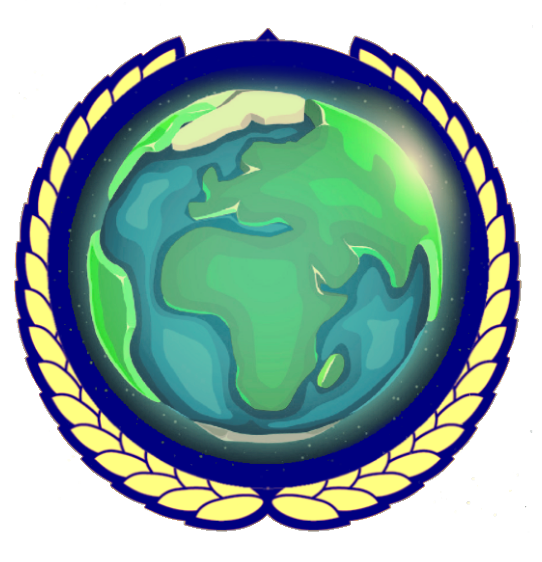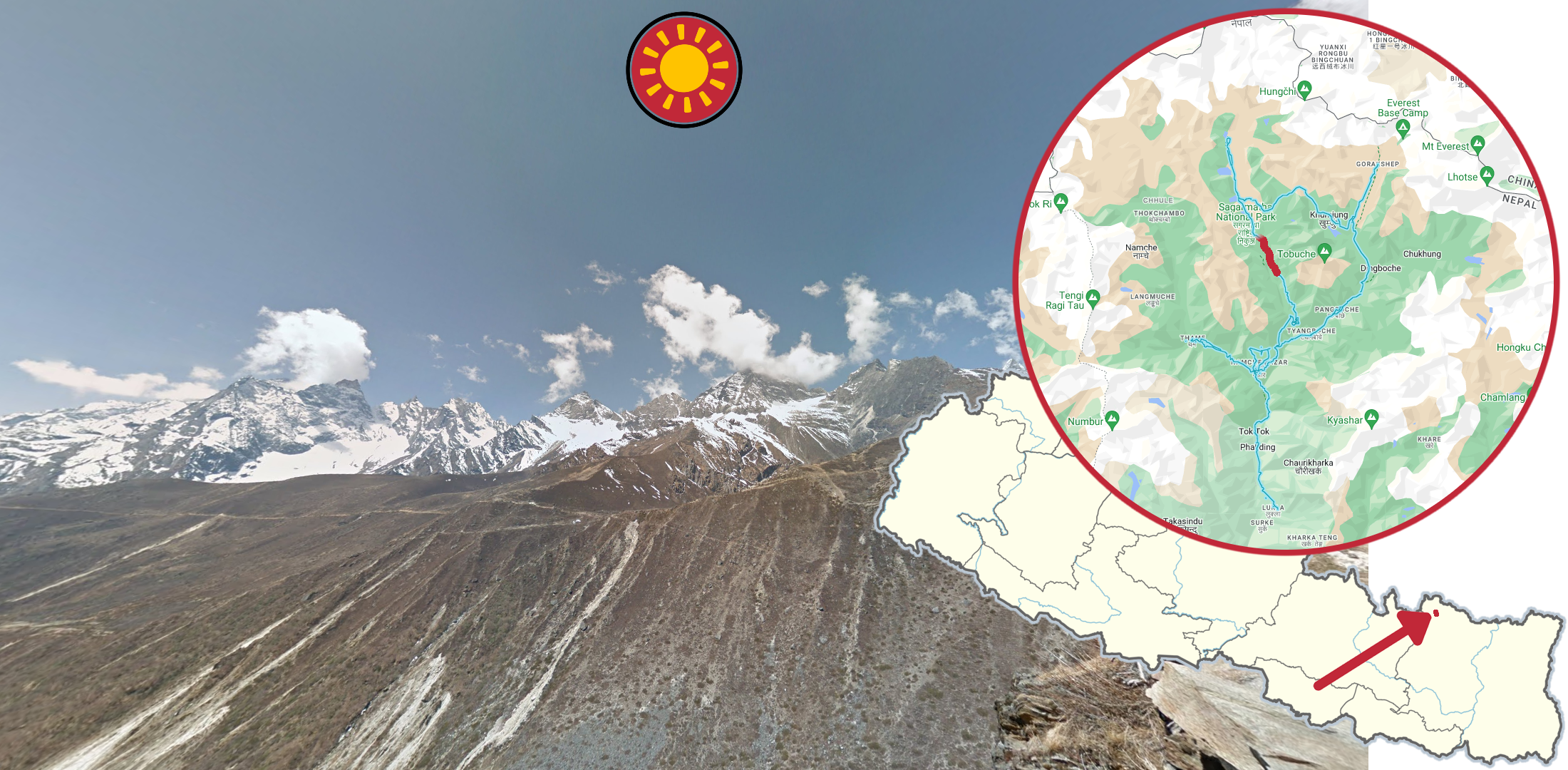
Nepal
Step 1 – Identifying Nepal
All of the road coverage in Nepal was taken with what’s commonly referred to as “shitcam”, which is a low-quality camera that can typically be recognised by the brownish colours and often, but not always, by a large circular blur covering the Street View car.
NOTE: Shitcam coverage is also very common in India and can rarely be found in Bangladesh and Sri Lanka.
Nepal uses the Devanagari script, which can be recognised by the line going through the top of each word and the straight vertical lines found in the majority of all letters.
NOTE: The characters ङ and especially ङ्ग are much more common in Nepali than in Hindi/Marathi. It is also quite common to find native Devanagari numbers on signage in Nepal, which is very rare in India.
Nepal typically uses square concrete poles in the flat areas, and thin metallic poles in the mountainous regions. The poletops vary, but it is often some kind of trident.
The concrete pole with a trident pole top and triangle supports is unique to Nepal. Another common pole almost unique to Nepal is a concrete square pole with 2 vertical insulators on the sides with a wide gap between them. Other poles can often appear very similar to poles in India.
Most buildings are either colorful blocky multi-story structures or small houses with painted concrete, red brick, or thatched looking walls, with either a tiled or tin roof. As part of the building facade, you will often spot triangle shaped decorations.
Rounded roof tiles are most common in the flat regions south of Kathmandu, but are also prevalent further west.
NOTE: Don’t mix this up with the half-rounded tiles, which are part of the hint below this.
West Bengal style roof tiles, which are more organised and have small diamond shaped protrusions, are most common in the far west flat region. This hint also works for the half-rounded tiles
Roofs that have a railing along the sides of the roofs, usually made of dark concrete, are found in some parts of western Nepal. They are most common in the Tulsipur valley, where the railings sometimes have a stair shape. The easternmost region where they’re found is the plains by Kawasoti. The westernmost regions often have lower quality “railings”, sometimes consisting of a few sticks.
Some roads north of Siddhicharan, in eastern Nepal are unique due to the high elevation hills with dark green rhododendron bushes growing in abundance. The bushes have red flowers which can be hard to see.
Important note: The compass in Nepal is generally not very reliable. Thus, a compass will only ever be included in a picture for which the compass is at least mostly correct.
Settlements
Namche Bazar is by far the largest and most densely populated settlement with coverage in Nepal. There is also some coverage looking down on the town.
Lukla - Namche Bazar
Namche Bazar - Thame
Namche Bazar - Gokyo
Gokyo - Lobuche
East of Gokyo, you reach this dried out glacial valley, with bright grey rocks as far as you can see.
NOTE: This valley can less commonly be seen from the trail north of Gokyo.
Namche Bazar - Dingboche
Trail to Everest
GeoGuessr’s own official maps are not very good, for a variety of reasons. Plonk It recommends the following maps instead:
AI Gen Nepal (map link) - AI generated map with 100k+ locations.





















































































